With LSU taking a step forward in Ed Orgeron's second season, Texas A&M playing at a top-15 level in Jimbo Fisher's first season and Mississippi State playing maybe the best defense in the country in Joe Moorhead's debut, the SEC West enjoyed its best depth in years last fall. Better yet, the computers only project one team to regress this fall (MSU, and not by much) while six either stay the same or improve.
This is a mighty division in a mighty conference. Going 8-4 will be an accomplishment. But can anyone challenge Alabama this time around? Signs are hazy at best. LSU could be top-five caliber if last year's late-season offensive breakthrough wasn't a mirage, and hey, Auburn's always capable of going full-on Crazy Auburn. But even in a loaded West, one team continues to stand out.
A quick reminder on terminology: S&P+ is the tempo- and opponent-adjusted efficiency measure I created at Football Outsiders in 2008.
Teams are listed below in order of S&P+ projections. Click here for the SEC East preview.
Jump to a team:
Alabama | LSU | Auburn | Mississippi State
Texas A&M | Ole Miss | Arkansas
Alabama Crimson Tide
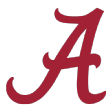
2018 record and rankings: 14-1 (No. 1 S&P+, No. 2 FPI)
2019 S&P+ projection: 10.7 wins (No. 1)
2019 FPI projection: 11.0 wins (No. 2)
At an existential level, college football contradicts itself. On one hand, it is an oligarchy. The teams that have always won are the teams winning the most right now. The Big Ten is still run by Ohio State, the Big 8/12 by Oklahoma, the SEC by Alabama, etc., just as it was in the 1970s. Shifts in the ruling class are rare.
At the same time, this is a sport that rewards success by making your job a lot harder. If you're a mid-major program or a second-tier program within a power conference, your reward for winning is often losing your head coach to a first-tier school. And if you're a coach on a big run of success, your reward is losing your key assistants to bigger jobs and having to replace them. And eventually you make iffy choices. Eventually Bobby Bowden hired Jeff Bowden at Florida State. Eventually Mark Richt hired Brian Schottenheimer at Georgia. Eventually Bob Stoops hired Mike Stoops (the second time) at Oklahoma.
Alabama head coach Nick Saban has, of late, gone through coordinators like Spinal Tap drummers.
• 2015: offensive coordinator Lane Kiffin, defensive coordinator Kirby Smart
• 2016: offensive coordinator Lane Kiffin (and, for one game, Steve Sarkisian), defensive coordinator Jeremy Pruitt
• 2017: offensive coordinator Brian Daboll, defensive coordinator Jeremy Pruitt
• 2018: offensive coordinator Mike Locksley, defensive coordinator Tosh Lupoi
• 2019: offensive coordinator Steve Sarkisian, defensive coordinator Pete Golding
That's insane. That's eight different coordinators in five seasons.
When (if?) the end comes for Saban's incredible run of dominance at Alabama, it will look a lot like what we've seen the past couple of years. His Crimson Tide won the 2017 national title, but they needed a desperate comeback from a backup quarterback and an overtime heave to fend off a rising conference rival (Georgia) led by a former Saban protege (Kirby Smart) who turned around and took Saban's recruiting title a month later.
In 2018, with two new coordinators (who were each about to leave Tuscaloosa), the Tide got blown out in the national title game by a team enjoying far more coaching-staff continuity (Clemson). Clemson headed into the game with a couple of clear statistical and matchup advantages -- namely, its receiving corps against Alabama's secondary and its incredible red-zone defense against Alabama's wholly average red-zone offense -- and absolutely destroyed the Tide with them. Alabama had plenty of advantages as well but couldn't turn them into points.
You don't usually go straight from great to mediocre -- you usually flash a few moments of obvious vulnerability before succumbing. And if we squint just right, those moments have certainly appeared.
Despite these moments, though, you could make a very strong case that the past four seasons have been the best of Saban's career. His Tide have lost just four games in four years (only two in the regular season), with four consecutive top-two finishes and title-game appearances. For all of his accomplishments, he hadn't yet done that. And after losing his recruiting crown to Smart in the 2018 class, he took it right back in 2019.
The rules of nature might or might not apply to Saban, something he has downright flaunted that this offseason, replacing not only both coordinators and seven full-time assistants, but also a damn hip. He's just showing off at this point.
Despite all the change, there's pretty strong continuity for Alabama this season where it might matter the most: on the field. Quarterback Tua Tagovailoa threw for 3,966 yards and 43 touchdowns while in charge of the most successful Bama offense since World War II, and he gets last season's top four wideouts (Biletnikoff winner Jerry Jeudy, Henry Ruggs III, DeVonta Smith and Jaylen Waddle) back.
The defense, meanwhile, returns its two most disruptive linebackers (Dylan Moses and Anfernee Jennings), and the secondary has infinitely more continuity than it did this time last year, when it was replacing its top six tacklers. It has stars to replace, to be sure -- tackle Quinnen Williams, safety Deionte Thompson, pass-rusher Christian Miller, etc. -- but that's always the case. The overall depth of experience is still stronger than last year.
Alabama is going to be awesome in 2019. Of course it will be. The Crimson Tide are projected second in FPI and first in S&P+ and are a projected double-digit favorite in every regular-season game.
Thanks to life in the SEC West, plus a crossover game against a potential top-20 South Carolina, the Tide will face plenty of obvious tests despite a nonconference slate far softer than normal. But they are tests Alabama usually passes. We probably won't know whether Saban's recent staff turnover (and the addition of bionic body parts) has paid off until December and beyond.
LSU Tigers

2018 record and rankings: 10-3 (No. 5 S&P+, No. 17 FPI)
2019 S&P+ projection: 8.9 wins (No. 4)
2019 FPI projection: 9.5 wins (No. 4)
Ed Orgeron is one of college football's biggest personalities, and for much of his life he has done everything big. He has coached big, played big, lived big -- and, yes, he has dreamed big.
On Saturday, this self-described Cajun brawler realized one of his most cherished childhood dreams when LSU introduced him as its full-time head football coach.
As somebody who grew up on LSU football in the small town of Larose, Louisiana, and helped lead South Lafourche High School to a state championship in 1977, Orgeron considered the "Tigahs" -- as he calls them in his unmistakable baritone voice -- football royalty.
-- ESPN's Chris Low, November 2016
Ed Orgeron took on his dream job at a pretty awkward time. His predecessor and former boss Les Miles had established a level of consistent success that this resource-heavy program had rarely enjoyed, but Miles' predecessor was (and still is) succeeding even more with a division rival.
Miles won the national title in 2007 (the program's third ever) and reached the title game again in 2011. He won two SEC titles, and in 11 full seasons, he finished in the AP top 10 five times and finished ranked another four times. But the specter of Nick Saban loomed at all times.
Miles beat Saban's Alabama in 2010 and in the 2011 regular season, but beginning with Bama's 2011 BCS Championship Game win, the Tigers never got back over the hump. They never finished in the top 10 again, either. LSU nearly made a change with Miles going 9-3 in 2015, then went ahead and pulled the trigger when Miles started 2016 at 2-2.
Orgeron faced a two-step task in front of him: First, he had to figure out how to get LSU back to its Miles-level peak. Then he had to figure out how to catch up to Saban as well.
The latter task has been accomplished, among active coaches, by only Clemson's Dabo Swinney. Georgia's Kirby Smart has come pretty close. But at the very least, Orgeron crossed the first item off the to-do list last fall.
Orgeron's second full season saw the Tigers win double-digit games for the first time since 2013 and finish in the AP top 10 for the first time since 2011. LSU was as dominant as ever defensively -- Dave Aranda has yet to field a defense that ranks worse than eighth in defensive S&P+ at LSU -- and late in the season, an offense piloted by Ohio State QB transfer Joe Burrow found life.
It took some funkiness (and lots of overtime periods) for the Tigers to lose at Texas A&M and not finish the season on a four-game win streak. And thanks to a mountain of returning production (plus the No. 3 recruiting class in the country), Orgeron's squad is projected fourth in FPI and fourth in S&P+.
The passing game returns almost entirely intact -- Burrow's back, as are six of last season's top seven targets -- and the offensive line boasts eight players who have combined for 78 career starts. The run game was far less effective last season than we're used to seeing, and that needs to change, but junior Clyde Edwards-Helaire was efficient at times for coordinator Steve Ensminger, and incoming blue-chippers John Emery and Tyrion Davis-Price could quickly carve out niches.
Losing corner Greedy Williams and linebacker Devin White -- both first-round NFL draft picks -- hurts, but Aranda's defense has eight starters back and a level of depth most coordinators dream of.
Sophomores K'Lavon Chaisson and Micah Baskerville could enjoy breakthroughs at linebacker if they stay healthy, and corner Kristian Fulton was excellent when healthy, too. The line returns four of five key rotation members and gets a chance to break in two young and enormous tackles in sophomore Tyler Shelvin (6-foot-3, 362 pounds) and freshman Siaki Ika (6-4, 347).
Orgeron proved last season he was worthy of the hire, and he signed an excellent recruiting class last fall. His depth chart has lovely class balance -- to better avoid sudden drop-offs in the future -- and per S&P+, his Tigers are projected favorites in 11 of 12 games this fall. But they're still a 12-point underdog at Alabama. The Tigers haven't even stayed within single digits of Bama since 2014, and they got outgained by 380 yards in last season's disastrous 29-0 loss.
If Orgeron keeps winning double-digit games and major bowls but continues to fall short against Saban, will that be enough for LSU, its administrators and its fans?
Auburn Tigers
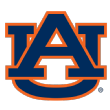
2018 record and rankings: 8-5 (No. 7 S&P+, No. 12 FPI)
2019 S&P+ projection: 7.8 wins (No. 8)
2019 FPI projection: 7.7 wins (No. 9)
In six seasons as Auburn's head coach, Gus Malzahn has beaten seven teams that were ranked in the top 10 at the time. Part of being a successful coach is stockpiling moments, and Malzahn's had more than his fair share.
Of course, when you play the schedule Auburn tends to play, you have plenty of opportunities at those moments. You probably suffer plenty of losses, too.
You could make the case that Auburn's own personal conference is the country's hardest. Not only do the Tigers play in the SEC West, but they also draw Georgia each year in interdivision play. They've also played a top-10 team in nonconference play for three straight years, and depending on where Oregon ends up in the preseason polls (likely in the No. 8-11 range), that could soon become four straight years.
In all, Malzahn's team has played 20 top-10 teams, nearly 3½ per year. (Alabama has played only 21 such games in that span, and that's with nine CFP games mixed in.) Auburn has played 15 more teams ranked between 11th and 25th, too (it's 9-6). In 2017, his Tigers beat No. 2 Georgia by 23 and No. 1 Alabama by 12. Their reward: having to play Georgia again for the SEC crown.
If FBS had an FCS-style 24-team playoff or something, we would say these schedules make Auburn battle-tested and ready. Instead, these schedules mostly eliminate the Tigers from playoff contention.
Nothing will change in this regard in 2019. Auburn is scheduled to play two projected top-20 teams (per S&P+), both away from home, among its first four games, then play five top-10 teams from there. For good measure, the Tigers also somehow go over a month without a home game in the middle of the season. They are projected eighth overall, and their most likely record is 8-4, a record that would feature at least three big-time wins.
Three big-time wins with a freshman quarterback, by the way.
With Jarrett Stidham going pro and last season's backup, Malik Willis, announcing his transfer in May, Malzahn will likely be starting either true freshman Bo Nix or one of two redshirt freshmen -- Joey Gatewood and Cord Sandberg -- when the Tigers meet Oregon in Arlington, Texas, in Week 1.
Granted, said QB will have a pretty good supporting cast. Backs JaTarvious Whitlow and Shaun Shivers were both ultra-efficient as freshmen last season, and veterans Kam Martin and Malik Miller are both still around as well. Plus, after returning almost no experience last season, the offensive line is stocked and continuous -- those responsible for 64 of last season's 65 starts are back, including five seniors.
There's some turnover to worry about at receiver with the loss of leaders Ryan Davis and Darius Slayton. But while a lack of passing game continuity can be damning for an offense, Lord knows there's talent in a batch that includes sophomores Seth Williams and Anthony Schwartz, 2018 injured players Will Hastings and Eli Stove, and transfers Zach Farrar (Youngstown State) and H-back Jay Jay Wilson (Arizona State).
Defensively, things appear as favorable as ever. Auburn has ranked sixth or better in defensive S&P+ in back-to-back seasons under coordinator Kevin Steele, and the Tigers boast a seasoned defensive front led by tackle Derrick Brown and ends Marlon Davidson and Nick Coe, plus a veteran secondary led by safeties Daniel Thomas and Jeremiah Dinson and corners Noah Igbinoghene (who held his own despite changing from offense to defense) and Javaris Davis. Young safeties Jamien Sherwood and Smoke Monday have major disruptive potential, too.
Still, Alabama returns Tua Tagovailoa, Georgia returns Jake Fromm, LSU returns Joe Burrow, Texas A&M returns Kellen Mond, Oregon returns Justin Herbert, and Auburn is starting a freshman. That's frightening. Sure, Malzahn's two best seasons (2013 and 2017) came with first-year starters. But that doesn't change the fact that Auburn's starting from behind in the most important position in the sport.
Malzahn has done a really good job on the Plains. During one of the most dominant times in rival Alabama's history, he has two SEC West titles, two Iron Bowl victories, two top-10 finishes and an SEC title. That's the same number of top-10 finishes and SEC titles as Tommy Tuberville managed in a decade. Hell, it's the same number of conference titles as Shug Jordan won, and Auburn's stadium is half-named after him! But even with a top-10 caliber team, this stands to be a season as emotionally fraught as any other he's faced there.
Mississippi State Bulldogs
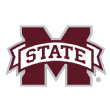
2018 record and rankings: 8-5 (No. 8 S&P+, No. 9 FPI)
2019 S&P+ projection: 8.4 wins (No. 10)
2019 FPI projection: 7.7 wins (No. 16)
Over the past 70 years, since a dominant run in the 1940s, Mississippi State has won eight or more games in a season just 15 times. For a program based in a small town, with less revenue and a smaller alumni base than the blue bloods in its own division, going 8-5 or so will always be an accomplishment of sorts.
The 2018 season, Joe Moorhead's first as MSU head coach, was no different. To get to eight wins, the Bulldogs beat both Auburn (No. 8 in the AP poll at the time) and Texas A&M (No. 16 at the time) by two touchdowns each, walloped division rivals Arkansas and Ole Miss by a combined 78 points, and beat Kansas State by three touchdowns in nonconference play.
Moorhead inherited from predecessor Dan Mullen (now at Florida) the best defensive line in the country outside of Clemson's, plus the components of an excellent run game. He used them both to great effect. MSU ended up first in defensive S&P+, leveraging you into passing downs and then teeing off, and Bulldogs ball carriers gained at least four yards on 59 percent of their non-sack carries, second-best in the country.
When this team was good, it was great. The high points revealed a level of upside few could match, and MSU finished the season eighth in S&P+ and ninth in FPI. (While the Bulldogs have to replace quarterback Nick Fitzgerald and a couple of dominant defensive linemen, they return virtually everybody else. They're projected to slip only to 10th in S&P+ and 16th in FPI.)
Those great moments, however, just made the mediocre moments more frustrating.
Before the win over Auburn, the Bulldogs scored a combined 13 points in losses to Kentucky and Florida. Before beating A&M, they had to slog through a 19-3 loss to LSU. Before crushing Arkansas and Ole Miss, they were shut out by Alabama. And with a chance to match 2017's nine-win total, they slipped up, blowing enough opportunities to lose to Iowa by five in the Outback Bowl despite allowing only 199 yards.
If you could slow down MSU's dominant run game, there was no Plan B. Fitzgerald was one of the best rushing QBs of the 2010s in college football, but Moorhead's run-pass option-heavy offense, which he perfected first as Fordham's head coach and then as Penn State's offensive coordinator, requires nifty deep balls to keep defenses honest. Fitzgerald's deep shots were below average at best.
The run game was so good that only great defenses could slow it down. But there are a lot of great defenses on MSU's schedule.
Coordinator Bob Shoop's second MSU defense has more than enough pieces to be excellent again, although it will almost certainly slip a little without linemen Jeffery Simmons and Montez Sweat and safety Johnathan Abram, all three of whom were first-round draft picks.
That means that to even stay at the eight-win level, the offense needs to prove it can diversify a bit more. That makes the QB battle awfully interesting. Moorhead recently signed Penn State grad transfer Tommy Stevens, giving him both a physical link to those awesome PSU offenses and an intriguing competitor for junior-to-be Keytaon Thompson.
Thompson might be an even better runner, and even worse passer, than Fitzgerald was. Not including sacks, he's averaged 7.6 yards per carry in parts of the past two seasons, but he's completed just 49% of his passes, connecting on a few deep balls but struggling with the shorter stuff.
Stevens was athletic enough to spend time as a utility man (part-QB, part-RB, part-WR) in PSU's offense, but to put things in parlance Moorhead uses at times, Stevens is a passer who can run a little, and Thompson is a runner who can pass a little.
With running backs Kylin Hill and Nick Gibson returning, along with last season's top three receivers (plus Kansas State transfer Isaiah Zuber) and three linemen who have combined for 65 career starts, the supporting cast should be able to do what Moorhead asks of it. And with a schedule that features quite a few toss-ups and only one truly likely loss (Alabama at home), MSU could win big if the offense can fully execute Moorhead's vision.
To be sure, it's a hell of a vision -- constant 11 personnel, empower your QB, slap a pass tag onto every run call, adapt constantly. But it does still require a pretty deep ball ...
Texas A&M Aggies
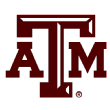
2018 record and rankings: 9-4 (No. 11 S&P+, No. 13 FPI)
2019 S&P+ projection: 6.9 wins (No. 13)
2019 FPI projection: 7.4 wins (No. 11)
Some schools find a certain level and stick with it. Under first George Welsh and then Al Groh, for instance, Virginia won between seven and nine games 14 times in 16 years. Under first Jeff Bower and then Larry Fedora, Southern Miss won between six and nine 17 times.
Some programs are far too restless to do that.
Mind you, in terms of pure win-loss records, Texas A&M appears to be one of the most stable programs college football has ever seen. In the 65 seasons since the school hired a young Bear Bryant away from Maryland, A&M has indeed fallen into that seven- to nine-win range 28 times. Expand that range to between six and 10 wins, and you encompass 40 seasons. It seems the Aggies are what they are.
That doesn't mean they accept that. When things start growing stagnant, they have the tendency to fire the money cannon.
When Tom Wilson was slow to move the program forward after Emory Bellard's departure in 1978, the school extended his contract -- and then suddenly fired him shortly thereafter. Boosters wanted Bo Schembechler. When they couldn't get him, they gave Jackie Sherrill the richest contract in the sport's history.
When R.C. Slocum fell into that six- to eight-win rut after a series of conference titles and major bowl appearances, he was fired, and A&M waved enough money at Dennis Franchione to steal him away from Alabama. (We don't appreciate that moment enough -- a school that was at that point in the Big 12 waltzed into Tuscaloosa and stole a coach!)
When Kevin Sumlin fell into an eight-win rut after a Johnny Manziel-powered first-year breakthrough, it was time to fire the cannon again. Jimbo Fisher's tenure at Florida State had grown stale, but it was still going to take a lot of money to steal him away. So A&M spent a lot: $75 million guaranteed.
A&M brought Fisher to town, gave him a record contract, and then handed him a schedule that all but assured he wouldn't live up to whatever win expectation that money brings with it.
Last season, Fisher's first A&M team had played both eventual national title game participants by late September. The Aggies played at Mississippi State and Auburn in back-to-back weeks, too. They went 0-4 in these games with two tight defeats, but they went 9-0 in their other games. That included victories over Kentucky at home and South Carolina on the road, plus a three-touchdown demolition of Conference USA champ UAB and a 52-13 humiliation of NC State in the Gator Bowl.
A&M's nine-win total was basically an average Sumlin season (he averaged 8.5 wins per year), but it came with high degree of difficulty. And here comes an even higher degree.
You see, A&M now has to play at Clemson and replaced a Kentucky home game with a trip to Georgia in interdivision play. If you're keeping score at home, then, that means a home game against S&P+'s projected No. 1 team (Alabama) and trips to Nos. 2-4 (Clemson in September, Georgia and LSU in November). Oh yeah, and three other projected top-20 teams visit College Station.
Goodness.
Mind you, the Aggies could be very, very good. Quarterback Kellen Mond returns after throwing for 3,107 yards in his first season with Fisher, and every wideout is back as well, including super-efficient slot men Quartney Davis and Camron Buckley. Running back Trayveon Williams and a couple of line starters are gone, but sophomores Jashaun Corbin and Jacob Kibodi have massive potential, and the line is loaded with veterans (four players have combined for 54 starts).
The defense has a few more questions to answer -- three of last season's top four linemen are gone, as are two starting linebackers and both starting safeties -- but still boasts some playmakers. Corners Debione Renfro, Charles Oliver, and Myles Jones (combined: six tackles for loss, one interception and 22 pass breakups) are super-active, and the return of two key players from injury -- sophomore linebacker Anthony Hines III and senior end Micheal Clemons -- could provide enough stability that coordinator Mike Elko isn't forced to dip too heavily into the amazing incoming freshman class for help.
S&P+ projects A&M 13th overall -- and projects an average win total of seven. That says a lot.
In 2020, Clemson and Georgia are replaced on the schedule by Colorado and Vandy. Maybe that's when the wins begin to pile up.
Ole Miss Rebels

2018 record and rankings: 5-7 (No. 33 S&P+, No. 58 FPI)
2019 S&P+ projection: 5.4 wins (No. 39)
2019 FPI projection: 5.8 wins (No. 41)
The last time Mike MacIntyre was an assistant coach was 10 years ago. He was David Cutcliffe's first Duke defensive coordinator in 2008-09 and engineered solid improvement for a couple of years, improvement which was completely undone when he took the San Jose State head-coaching job.
The last time Rich Rodriguez was an assistant coach was 19 years ago. Nineteen! He had begun to perfect his version of the read-option offense, and his quarterback, Woody Dantzler, had nearly become the first QB to throw for 2,000 yards and run for 1,000 in the same season. (Dantzler would pull it off the next season, and the feat would become far more common over the preceding two decades.)
MacIntyre briefly resurrected SJSU before taking the Colorado job, where he pulled off a miraculous division title run in 2016. Rodriguez nearly won a national title at West Virginia before, regretfully, taking the Michigan job, running aground, and ending up at Arizona, where he won a division title in 2014.
Both coaches arrive in Oxford following off-field issues late in their respective head-coaching tenures. MacIntyre didn't do enough in response to a domestic assault accusation against an assistant, and Rodriguez was sent packing in part because of a sexual harassment allegation and hostile workplace lawsuit. That's part of the reason they were available for Ole Miss head coach Matt Luke to scoop them up this past offseason.
Two years into Luke's head-coaching tenure in Oxford, you could say he's already reached the nothing-to-lose stage.
Luke was promoted to interim head coach in the summer of 2017, when Hugh Freeze was forced to resign for his own behavioral issues. He went only 6-6, but with the school facing NCAA sanctions, the former Ole Miss center and longtime Rebels assistant got to keep his job full time. But despite a loaded receiving corps and prolific offense, the Rebels sank to 5-7, then lost most of those receivers.
It was a good time to make some big changes. The defense had suffered a slow-motion collapse, from a peak of seventh in defensive S&P+ during the Land Shark era (2014) to 90th last fall. And while the offense had remained dangerous, it vanished against the SEC West's good defenses (three points against Mississippi State, seven against Alabama, 16 each against LSU and Auburn) and had just lost all its best players anyway. It was about to regress.
In the big picture, Luke hasn't done poorly by any stretch of the imagination. Despite scholarship and postseason restrictions, Ole Miss had fallen only to 26th in S&P+ in 2017 and 33rd in 2018. He continued to recruit pretty well, too. Under normal circumstances, the Rebels would have probably pulled off winning records in both seasons. But after a slight step backward, the SEC West began to rebound in 2017, then surged last fall thanks to steps forward by LSU, Mississippi State and Texas A&M (and Alabama's continued dominance). That made wins hard to come by.
Any hope of the Rebels standing out in 2019 will probably depend on the new marriage between Rodriguez and redshirt freshman quarterback Matt Corral.
The 2018 blue-chipper played in four games and made the absolute most of his opportunities, going 16-for-22 for 239 yards, two touchdowns and an interception. Not including three sacks, he also rushed 10 times for 101 yards and two scores. Granted, most of this production came against UL Monroe, but it certainly backed up his recruiting hype.
Corral's dual-threat ability has to be appealing to Rodriguez, who also inherits running backs Scottie Phillips, Isaiah Woullard, and incoming blue-chipper Jerrion Ealy.
That's a great starting point, but there are red flags elsewhere. Only two returning linemen boast starting experience, and the receiving corps gets a massive reset with the losses of A.J. Brown, DK Metcalf, DaMarkus Lodge and tight end Dawson Knox. Four-star sophomore Elijah Moore is back, and junior Braylon Sanders and tight end Octavious Cooley have had their moments, but if Rodriguez is to switch to a more run-heavy approach, now's a good time for it.
MacIntyre has a lower bar to clear defensively, and his first Ole Miss defense will be the Rebels' most experienced in a couple of years. They return their top four linemen, top five linebackers and five of last season's top seven DBs. Known playmakers are at a minimum outside of tackle Benito Jones and OLB Qaadir Sheppard, but depth could be a strength, at least.
Arkansas Razorbacks
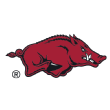
2018 record and rankings: 2-10 (No. 53 S&P+, No. 91 FPI)
2019 S&P+ projection: 5.5 wins (No. 48)
2019 FPI projection: 4.8 wins (No. 60)
Hiring a new coach is a spectacular crapshoot. Evaluating it in real time is equally difficult. Granted, that doesn't stop us from doing it, but both writers and athletic directors are going to be wrong a lot in their assumptions.
Sound, logical hires fail a lot in college football, and often for one simple reason: A vast majority of hires are pretty sound and logical, and yet someone has to lose every game.
For the most part, Arkansas' hires of the past 30 years have been perfectly logical.
• Jack Crowe (1990-92) was a successful ACC and SEC offensive coordinator. He was fired one game into his third season.
• Danny Ford (1993-97) had won a national title at Clemson a decade earlier. He won Arkansas its first division title in 1995 but only once won more than six games.
• Houston Nutt (1998-2007) was a former Arkansas quarterback and assistant who had won big at Murray State. He was maybe the biggest reach of the past three decades, but he also brought the most success: four seasons of at least nine wins, three top-20 finishes and two more SEC championship appearances. Of course, he was also Houston Nutt and was eventually run out of town for being Houston Nutt.
• Bobby Petrino (2008-11) was a prolific and massively successful former Louisville head coach. In 2011, he brought the school its first top-five finish nearly 25 years. But he was also Bobby Petrino and was eventually run out of town for being Bobby Petrino.
• Bret Bielema (2013-17) was a massively successful former Wisconsin head coach who had engineered three top-10 finishes and three consecutive Rose Bowl appearances in Madison. He won more than seven games just once.
• Chad Morris (2018-present) is a longtime offensive innovator who helped to ignite Dabo Swinney's Clemson program, then needed only three years to flip SMU from 1-11 to 7-6.
Thirty years of seemingly sound hiring practices has produced five ranked finishes and six seasons with more than eight wins. That could say a little bit about the chaotic, too-many-cooks machinations that tend to crop up in the Arkansas booster community, but it mostly speaks to the neighborhood in which Arkansas has chosen to live.
As hard as it is to stand out in the SEC West -- it bears mentioning, by the way, that the Razorbacks have more division titles than Ole Miss, Mississippi State and relative newbie Texas A&M combined -- it's even harder to continue standing out. Arkansas brings in solid revenue and continues to try to keep up from the perspective of the facilities arms race, but engineering consistent success is damn near impossible.
Morris, then, enters his second season in Fayetteville facing two perpetual questions for Razorbacks head coaches: (1) How long until he generates at least a top-30 level of success (as most of his predecessors have), and (2) if or when he gets to that level, can he do anything more?
Morris' first season was a Year Zero situation -- in which a coach undergoing a rebuild suffers a poor season and basically gets a mulligan for it -- if ever one existed. The Hogs had slipped to 4-8 and 63rd in S&P+ in Bielema's final season, and Morris was not only installing serious offensive changes, but also doing so without a quarterback who could do what he needed. Arkansas improved from bad to decent defensively but showed only rare flashes of offensive life, then completely gave out down the stretch. A 2-10 season ended with the Hogs getting outscored 90-6 by Mississippi State and Missouri.
It doesn't tend to matter how poorly a Year Zero goes as long as you find the answers you're looking for. Lou Holtz, after all, went 0-11 in his first season at South Carolina in 1999, and it didn't stop him from finishing ranked in each of the next two. Morris signed a top-25 recruiting class, and perhaps more important, he brought in Ben Hicks, his former SMU quarterback, as a grad transfer. His skill corps enjoys high continuity and welcomes a trio of four-star freshmen. The defense, which really did show occasional life in its first season with coordinator John Chavis, will be experienced in the front seven, if thin in the secondary.
There's no reason to think Morris can't have at least a top-40 or top-50 team this fall and a top-30ish squad sometime after that. But at Arkansas, doing it once or twice isn't the issue.
